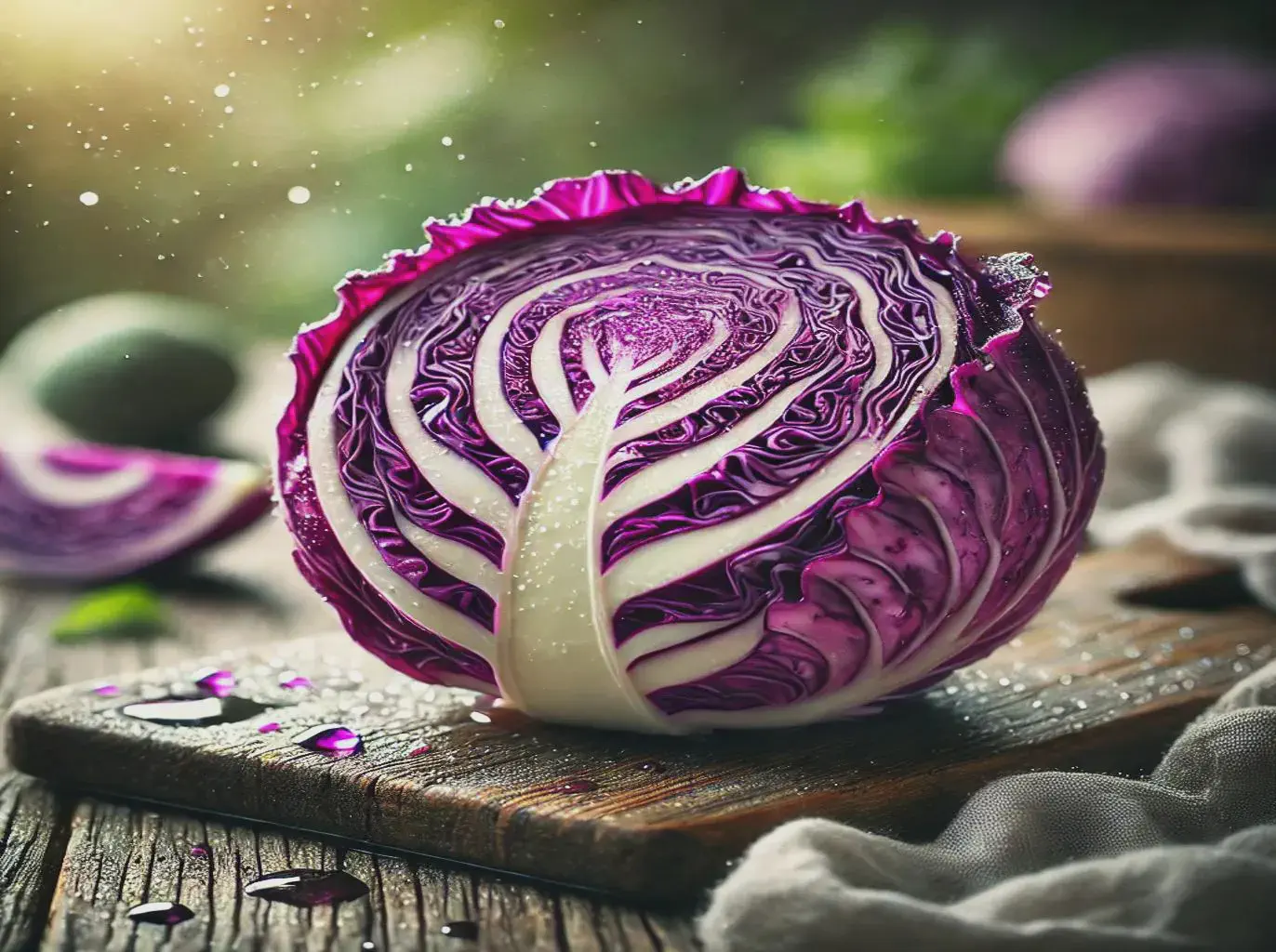
Red Cabbage
By Jens Geffken - WrittenRed Cabbage is a nutritional powerhouse and culinary gem. The star in the everyday Kitchen Red cabbage, often referred to as “purple cabbage” due to its striking color, is a versatile vegetable that has graced European and Asian kitchens for centuries. Its crunchy texture and mildly sweet taste make it an ideal ingredient for a variety of dishes, particularly salads. Whether shredded raw or lightly fermented, red cabbage brings both beauty and nutrition to your plate. But red cabbage isn’t just a feast for the eyes—it’s a powerhouse of nutrients. As an unassuming yet essential part of traditional cuisines, it has a fascinating history and a myriad of health benefits that make it a must-have in your diet. Here are five Distinguished Health Benefits of Red Cabbage.
1. Rich in Antioxidants
Red cabbage owes its vibrant purple color to anthocyanins, powerful antioxidants known to reduce inflammation and protect cells from oxidative damage. These antioxidants also support heart health and reduce the risk of chronic diseases.
2. Boosts Immune System
Packed with Vitamin C, red cabbage strengthens the immune system, helping your body fight off infections and illnesses. Just a cup of raw red cabbage can provide over half of your daily Vitamin C needs!
3. Supports Gut Health
The fiber content in red cabbage promotes healthy digestion and helps maintain a balanced gut microbiome. When eaten raw or fermented (think sauerkraut), red cabbage provides probiotics, which further enhance digestion.
4. A Natural Detoxifier
High levels of glucosinolates, sulfur-containing compounds, aid the liver in flushing out toxins from the body. This makes red cabbage a natural detox food.
5. Promotes Healthy Skin and Hair
Its rich Vitamin A and Vitamin K content support healthy skin and hair growth. The nutrients also promote faster healing and protect the skin from harmful environmental effects.
The Historical Roots of Red Cabbage
Red cabbage is believed to have originated in the Mediterranean region, with records dating back to ancient Rome. The Romans cultivated several types of cabbage, appreciating its medicinal properties. Over time, red cabbage spread across Europe, becoming a staple ingredient in German, Polish, and Scandinavian cuisines. Known for its adaptability to cold climates, it became a key winter crop, ensuring food security in northern regions. In Germany, red cabbage is called Rotkohl or Blaukraut and is a quintessential side dish served with roasts. Its transformation during cooking—turning a deeper red or blue depending on acidity—makes it not only a culinary delight but also a natural pH indicator!
Red Cabbage in Salads
One of the best ways to enjoy red cabbage is raw, shredded finely in a salad. Its crisp texture adds crunch, while its mild sweetness pairs beautifully with citrus fruits, apples, and even nuts. Toss it with a light vinaigrette, and you have a refreshing, nutrient-dense dish perfect for any season. The Pro tip: add a splash of lemon or orange juice to bring out its vibrant red color and maximize its flavor.
Interesting Fact
Did you know that red cabbage can change color based on the pH of its surroundings? In acidic environments, it turns bright red, while in alkaline settings, it becomes blue or green. This quality has made red cabbage juice a fun and easy natural pH indicator for science experiments!
From its historical significance to its culinary versatility, red cabbage is truly a vegetable worth celebrating. Whether you’re preparing a salad, stir-fry, or hearty stew, let this humble yet vibrant plant elevate your meals and boost your health!